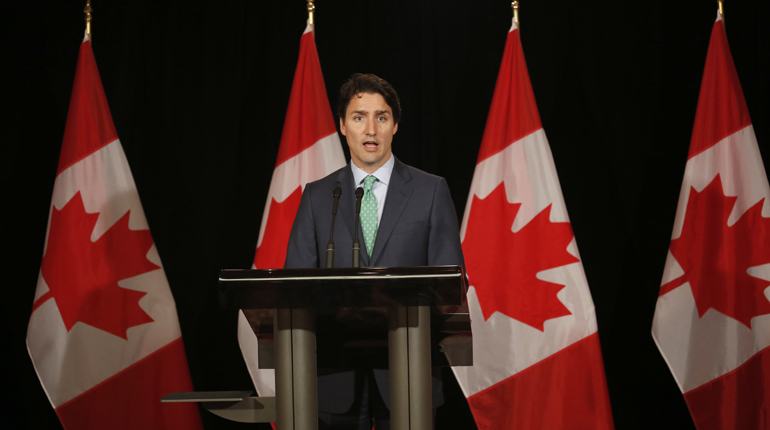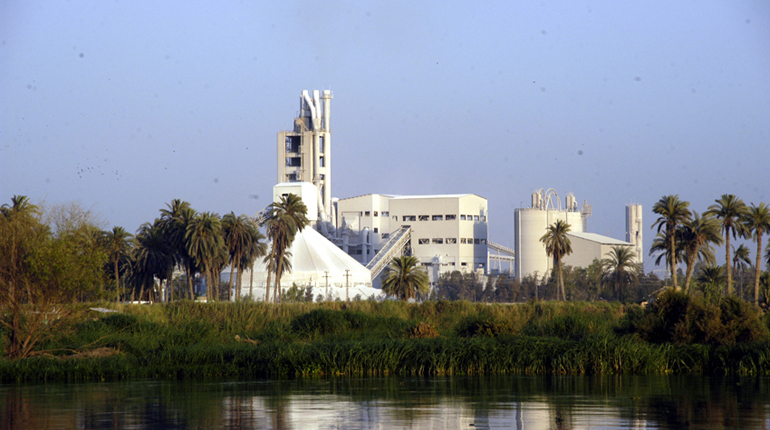 Canadian Prime Minister Justin Trudeau faces a choice between reducing emissions and maximising revenue. (PA)
Canadian Prime Minister Justin Trudeau faces a choice between reducing emissions and maximising revenue. (PA)
Canada’s Prime Minister Justin Trudeau must decide whether to prioritise emissions targets above future oil and gas revenue as he meets the presidents of the United States and Mexico to agree a new climate partnership.
The three leaders are expected to unveil details of the agreement at the so-called ‘Three Amigos’ summit in Ottawa on Wednesday.
The partnership is expected to feature new cap-and-trade agreements and new renewable energy strategies, with the overall aim of sourcing 50% of North America’s electricity from non-polluting sources by 2025.
Elected last October, Trudeau has moved away from his predecessor Stephen Harper’s lacklustre and often-criticised climate change programme. Trudeau has also appeared to put climate goals ahead of the country’s LNG ambitions, having stated in January in Canada’s House of Commons that his elected role is not to be a "cheerleader" for LNG projects. New carbon emissions regulations will "roll out very soon", he promised.
However, Mark Johnson, a spokesperson for Canada’s department of Environment and Climate Change, told Interfax Natural Gas Daily the country’s climate change plan has "not yet been determined", but he was optimistic a plan would be finalised.
"We are currently gathering feedback from all Canadians on clean growth and climate change via an interactive website launched in April this year," Johnson said.
No deadlines or dates have been confirmed by the government as to when Canada’s climate change plan will be launched.
Emissions vs resource development
If Trudeau commits to ambitious domestic climate goals, Canada’s LNG ambitions would likely suffer, experts say.
"You can’t have both," Robert Cooper, an oil and gas analyst with Calgary-based investment firm Acumen Capital, told Interfax Natural Gas Daily. "Canada’s climate change targets are catastrophic for our resource-rich development. Trudeau’s climate targets are totally unrealistic."
Cooper suggested the government’s climate ambitions would come at the expense of economic growth. "The federal government has goals of being clean. But the reality is, its climate change policy is against maximising [Canada’s] resource base. You cannot maintain prosperity without economic development," he said.
Cooper pointed out Canada’s contribution to global greenhouse gas emissions is less than 2%. This is small compared with China, which accounts for 28%, and the US, which accounts for 16%, according to 2011 data from the US Environmental Protection Agency.
Amin Asadollahi, head of the North America climate mitigation programme at Canadian environmental research group the International Institute for Sustainable Development, supports Trudeau’s climate targets and the move towards a more "diverse energy environment".
"Canada needs to be prepared to compete in a world that is becoming increasingly carbon-restrained," Asadollahi said. However, he acknowledged the loss of oil and gas revenue – on which Canada relies heavily – would make for a difficult transition from fossil fuels to a zero-carbon economy.
More than 20 LNG projects have been proposed in Canada, all of which are at various stages of design or approval. However, one development Canada’s Liberal government will have to consider under its carbon emissions targets is the $36 billion Petronas-led Pacific NorthWest LNG. The project was proposed three years ago but has met opposition from environmental groups and First Nations.
The consortium managing Pacific NorthWest has rejected concerns about its effect on climate change. The project estimates it will emit 4.9 mtpa of CO2, but experts say that figure is too low.
According to Maude Barlow, the chair of advocacy group the Council of Canadians, Canada will be unable to hit its target of reducing its greenhouse gas emissions by 30% by 2030 if Trudeau approves the project.
"The annual carbon pollution from Pacific NorthWest and its associated upstream operations would be the equivalent of between 11.5-14 mtpa of CO2," Barlow said on Sunday. The Canadian government plans to make a final decision on Pacific NorthWest by the end of December.
While the government appears set on its low-carbon drive, the level of commitment to reducing emissions varies from province to province.
"There are four provinces that are aggressive about reducing carbon emissions," Warren Mabee, director of the Queen’s Institute for Energy and Environmental Policy, told Interfax Natural Gas Daily. "British Columbia and Alberta introduced a carbon levy or tax, but Ontario has been the most aggressive with its renewables plans […] and Quebec met its Kyoto commitments," he said.
While climate has been high on the agenda, Mabee suggested the LNG industry should be part of the discussion. "What is needed is for the government and the LNG industry to define standards for the fugitive emissions from the liquefaction process so [they] can agree a standard […] so we know what kind of footprint we are talking about and are able to assess how well LNG projects are built and operated," he added.
Mabee said gas is a "good transition fuel to a zero-carbon economy", but noted Canada’s relative lack of experience with LNG.
He added that it would be worthwhile to look for the least-damaging carbon reduction solutions for the global environment. One example would be Canada exporting LNG to China to help reduce China’s reliance on coal.
"Canada faces a big challenge as we export about half of what we use domestically […] It is a challenge to replace revenue loss from the oil and gas industry," Mabee said. "Trudeau has a challenge, but it isn’t insurmountable."








Talk to us
Natural Gas Daily welcomes your comments. Email us at [email protected].